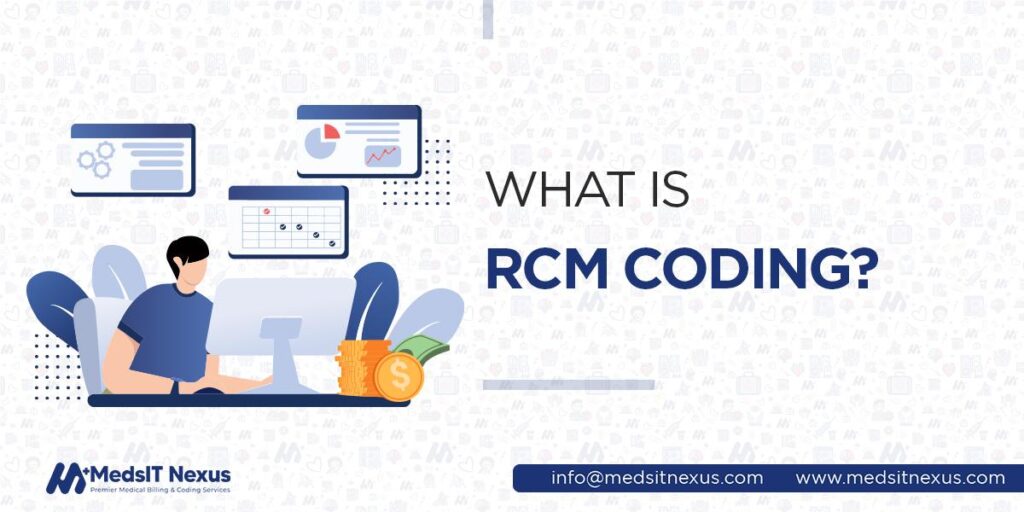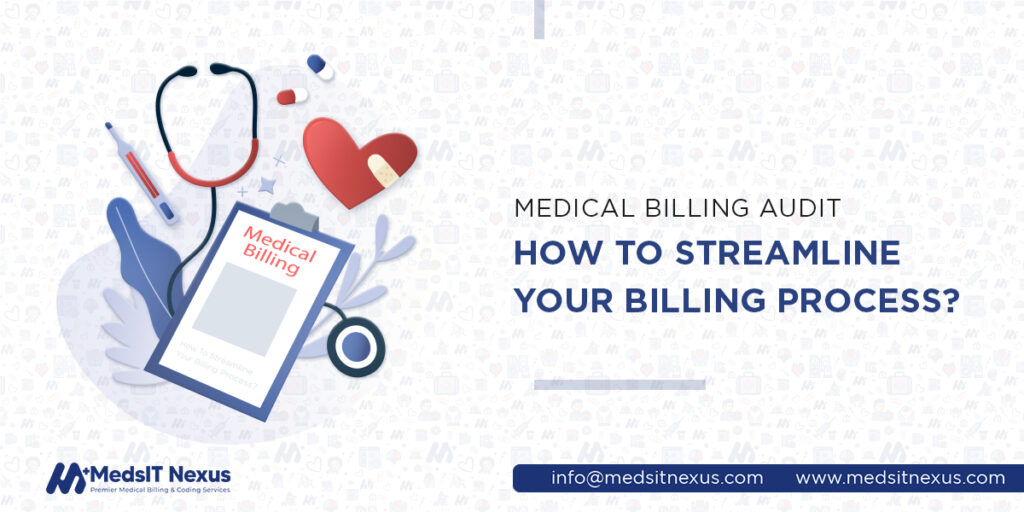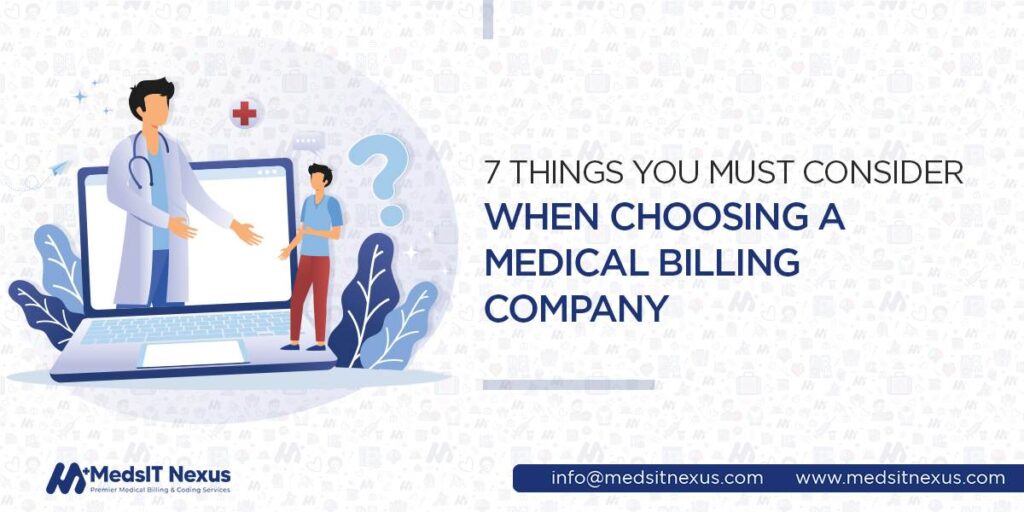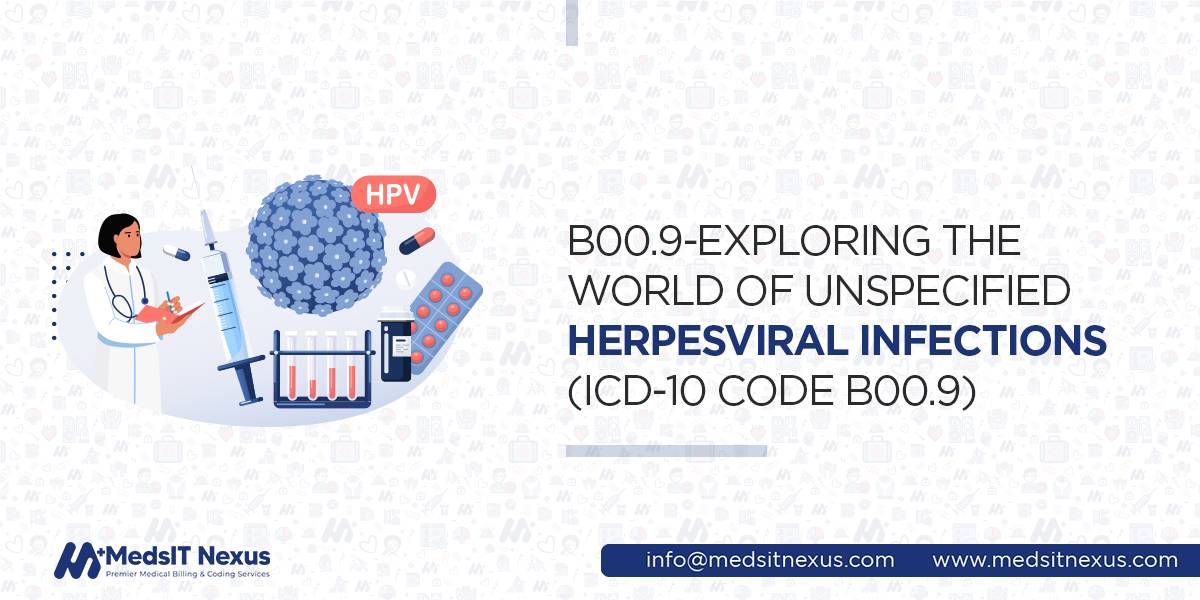What is RCM coding?

The healthcare industry is constantly evolving, and so is how healthcare providers manage their revenue cycle. Revenue cycle management (RCM) is essential to the healthcare industry, ensuring that healthcare providers are paid for their services. Medical coding is an integral part of RCM for the healthcare industry because claims will only be accepted when coding is accurate and payment is reimbursed. Hence, medical coding is the backbone of the revenue cycle. Healthcare organizations look for professional coders who can perform medical coding accurately and efficiently so that revenue will not be compromised. This article is beneficial for you to tell you the detailed connection between RCM and coding.
What Is Coding and Revenue Cycle Management?
Medical coding is the procedure of assigning standardized codes to medical diagnoses,
procedures, and services. These codes are used for documentation, billing, and statistical purposes.
Here are
the critical steps involved in the process of medical coding:
Collecting Information: The first step is to gather all necessary
medical documentation, including patient charts, medical reports, and test results.
Identifying Diagnoses and Procedures: The medical coder reviews the
documentation to identify all diagnoses and procedures relevant to the patient’s treatment.
Selecting Codes: The medical coder selects appropriate codes from the
relevant code set, such as ICD-10-CM for diagnoses and CPT/HCPCS for procedures.
Implementing Codes: The selected codes are entered into the patient’s
medical record and billing system.
Reviewing Accuracy: The medical coder reviews the codes entered for
accuracy and completeness, making any necessary revisions.
Submitting Claims: Once the coding is complete and accurate, the
medical coder submits insurance claims or bills to the appropriate payer for reimbursement.
Follow-up: The medical coder may need to follow up with the payer to ensure the claim
is processed and paid correctly.
Revenue Cycle Management (RCM)
In the field of medical coding, RCM stands for revenue cycle management. RCM is a comprehensive approach
to managing the financial aspects of healthcare practices, including billing, collections, and payments.
It involves tracking patient information, determining the appropriate codes for diagnosis and treatment,
and ensuring that healthcare providers are reimbursed for their services promptly and accurately.
RCM is a critical aspect of medical coding, as it ensures that healthcare providers are paid for their
services and that patients receive the necessary care. Without effective RCM practices in place,
healthcare providers may struggle to stay financially viable, and patients may not receive the care they
need.
Why RCM is Important?
Now, we will talk about the importance of RCM and the benefits of implementing RCM solutions.
The cornerstone for healthcare providers: An expertly crafted and
meticulously executed revenue cycle management (RCM) system is the cornerstone for a seamlessly
integrated and
streamlined healthcare ecosystem.
Acting as a bridge: Revenue cycle management systems are vital in the
healthcare industry, acting as a bridge between the business and clinical aspects of patient care.
Efficient
billing and collection: With its precise capture and documentation of patient information, such as their
name,
insurance provider, and other relevant personal details, RCM lays the foundation for efficient and
accurate
billing and collection cycles.
Timely services: The intelligent scheduling and appointment
functionality of an RCM system enables healthcare providers to optimize their time and resources,
ensuring that
patients receive timely and appropriate care.
Better turnaround time: One of the critical benefits of revenue cycle
management systems is their ability to improve the turnaround time associated with offering a service
and
receiving payment for it.
Reduced manual work & errors: By seamlessly integrating with
accounting systems and electronic health records (EHRs), RCM abolishes the need for manual data entry,
cutting
down the risk of errors and enabling providers to focus on delivering exceptional patient
care.
Automation: Moreover, revenue cycle management systems can help to
reduce administrative costs by automating repetitive tasks, such as data entry and claim
submission.
Medical coding is the Most Important Tool for RCM!
RCM involves several key steps, including patient registration, insurance verification, coding, and
billing, claims submission, payment processing, and follow-up on unpaid claims. Accurate medical coding
is one of the most critical steps in the RCM process. Medical coders assign specific codes to every
diagnosis and procedure during a patient’s treatment. Insurance companies use these codes to determine
how much reimbursement healthcare providers will receive for their services.
Medical coding is a critical component of healthcare revenue cycle management. Healthcare providers rely
on accurate coding to ensure they are paid for their services. Medical coders help insurance companies
pay the correct amount for each claim by assigning the appropriate diagnoses, procedures, and service
codes. Insurance companies use coding to process claims and determine reimbursement rates. Incorrect
coding can lead to claim denials, delayed payments, and even legal issues.
Revenue Cycle Management Challenges
Revenue cycle management faces numerous challenges, including navigating complex billing and coding regulations, managing denials and claim rejections, and adapting to ever-changing reimbursement models. Implementing robust technology solutions and proactive strategies are essential for healthcare organizations to overcome these challenges, optimize revenue streams, and achieve financial stability.
Changes in Regulations and Policies
One of the primary factors that can impact RCM is changes in regulations and policies. Healthcare
organizations must stay up-to-date with the latest rules and policies to ensure compliance and avoid
legal or financial consequences.
According to a survey by the Healthcare Financial Management Association (HFMA) in 2020, 93% of
healthcare organizations reported that regulatory and policy changes had a moderate to significant
impact on their RCM.
Coding and Documentation
Accurate coding and documentation are critical for RCM. If the coding is incorrect or incomplete, the claim can be denied, resulting in revenue loss for the healthcare provider. According to a Black Book Market Research survey, 94% of healthcare providers reported revenue losses due to coding errors.
Technology and Software
Technology and software can play a vital role in RCM. Electronic health records (EHRs) and other
software systems can help healthcare providers streamline billing processes and improve accuracy.
However, outdated or inefficient systems can result in errors and delays, impacting RCM outcomes.
A Black Book Market Research Survey found that 96% of healthcare providers reported that technology and
software were critical to their RCM success.
Staff Training and Turnover
Staff training and turnover can also affect RCM. Staff members who are not adequately trained in RCM
processes may make errors or fail to follow the correct procedures, resulting in claim denials and
revenue loss.
A Healthcare Financial Management Association (HFMA) survey found that 50% of healthcare providers
reported staff turnover as a significant challenge for RCM. Training and education programs can help
reduce errors and improve RCM outcomes.
Key Elements that Make Up the Coding and Revenue Cycle Field
The Coding and Revenue Cycle field is essential to healthcare organizations, ensuring
that healthcare providers receive the reimbursement they are entitled to for their services. This field
involves
various processes; several vital elements comprise this complex system.
Patient Registration: It involves collecting demographic and insurance
information from patients, verifying the accuracy of the data, and entering it into the healthcare
organization’s system.
Charge Capture: This process involves reviewing medical records,
identifying services rendered, and assigning appropriate codes based on the diagnosis and procedures
performed.
Coding: It involves the translation of medical diagnoses, procedures,
and services into numeric and alphanumeric codes used for billing and reimbursement purposes.
Claims Submission: This process involves creating and submitting
claims electronically or on paper, depending on the payer’s requirements.
Payment Posting: Payment posting involves recording payments received
from payers and patients. Payment posting also involves reconciling payments received with the amounts
billed to
identify any underpayments or overpayments.
Denial Management: This process involves reviewing denied claims,
identifying the reasons for denial, and taking appropriate action to appeal or correct the
claim.
Reporting and Analytics: Healthcare organizations use data analytics
to identify trends, measure performance, and improve revenue cycle processes. These metrics may include
the
average time to payment, days in accounts receivable, denial rates, and claim submission rates.
Samuel White, MBA-HC, CPAR -
Lead Author & Senior Healthcare Revenue Cycle Strategist at MedsIT Nexus
Leads editorial process for the publication of Technical RCM guides, reimbursement optimization case studies, and compliance-focused research content, expert evaluations of RCM software and medical billing solutions.






